Where does the UK rank when it comes to safe roads?
Road safety statistics: best to worst


Based on 2019 data collated by the UK's Department for Transport we've listed the safest countries first, with those that saw the highest road deaths towards the end. Read on to see where the UK ranks. Please note that the international comparisons of road accidents data is based on 38 selected countries in Europe and worldwide with comparable data.
38.
Most safe: Iceland (17 deaths per million population)


With a population of a little over 360,000, this equates to 17 deaths per million. Off-road driving is forbidden here and only 4x4 vehicles are allowed on its more challenging mountain roads. Other laws include headlights being switched on at all times and a maximum speed limit of 90 kilometres per hour (55.9mph) on paved rural roads.
37.
Norway (20 deaths per million)


A total of 108 people lost their lives in road accidents here in 2019 - the exact same figure as the previous year - and the biggest cause of road crashes was excessive or inappropriate speed. Driving conditions can be hazardous though for the country's 5.3 million residents, especially during the dark and extremely cold winters.
Joint 35. Sweden (22 deaths per million)


Ekaterina Kondratova/Shutterstock Sweden's 10 million inhabitants will be pleased to know their roads are also among the safest in Europe with a total of 221 deaths recorded in 2019. It's a positive decrease from 2018 when it registered 32 deaths per million, and a long way from 2008's figures, when a total of 440 people died in traffic accidents.
The country has followed a sustainable road safety approach since 1997 known as 'Vision Zero'. It's based around principles that shift responsibility for crashes from road users to the designers of roads, with a view to eliminating all serious injuries and fatalities. Story continues
Joint 35.
Switzerland (22 deaths per million)
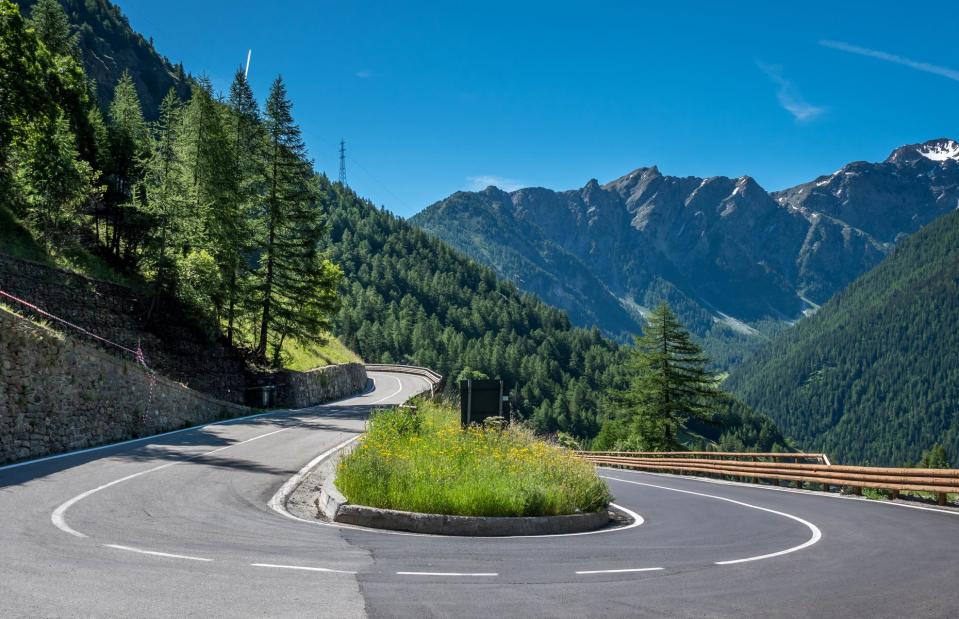

With a topography demanding plenty of tunnels and bridges, the landlocked country of 8.6 million people has a high-quality road network. It also has one of Europe's best road safety records with 22 road deaths per million population reported in 2019, compared with 27 the year before. There were a total of 187 deaths in 2019.
34.
United Kingdom (27 deaths per million)


Safer vehicles and measures to curb speeding such as fines - 2.4 million were issued in England and Wales alone during 2018 to 2019 - have been contributing factors to the low numbers. However, the UK has its accident hot spots and it was recently revealed that the most dangerous road is the A35 in Dorset, which had 594 collisions in 2019. Nottinghamshire was the county with the second most dangerous roads.
33.
Irish Republic (29 deaths per million)


Ireland's well below the European average of 51 road deaths per one million inhabitants too.
32. Japan (31 deaths per million)


Japan registered 3,920 traffic-related deaths on its roads in 2019, which is an impressively low number given the population currently stands at over 126 million people. Despite being renowned for its excellent public transport system, outside of the big cities most people rely on cars to get around. Speeding can be a problem, although the country does have severe penalties to deter excessive speed and drink driving.
In general, its roads are very well-maintained too.
31. Malta (32 deaths per million)


The Mediterranean archipelago has an excellent road safety record with only 16 deaths logged as a result of traffic accidents in 2019 out of a population of around 440,000. There are no high-speed motorways or highways on any of the Maltese islands - the largest of them is Malta, at 17-miles (27km) long and nine-miles (14.5km) wide. Traffic congestion can be bad, however.
A national Road Safety Strategy was launched by Transport Malta in 2014, which included lowering speed limits, enforcing stricter drink-driving laws and banning the use of mobile phones.
30: Denmark (34 deaths per million)
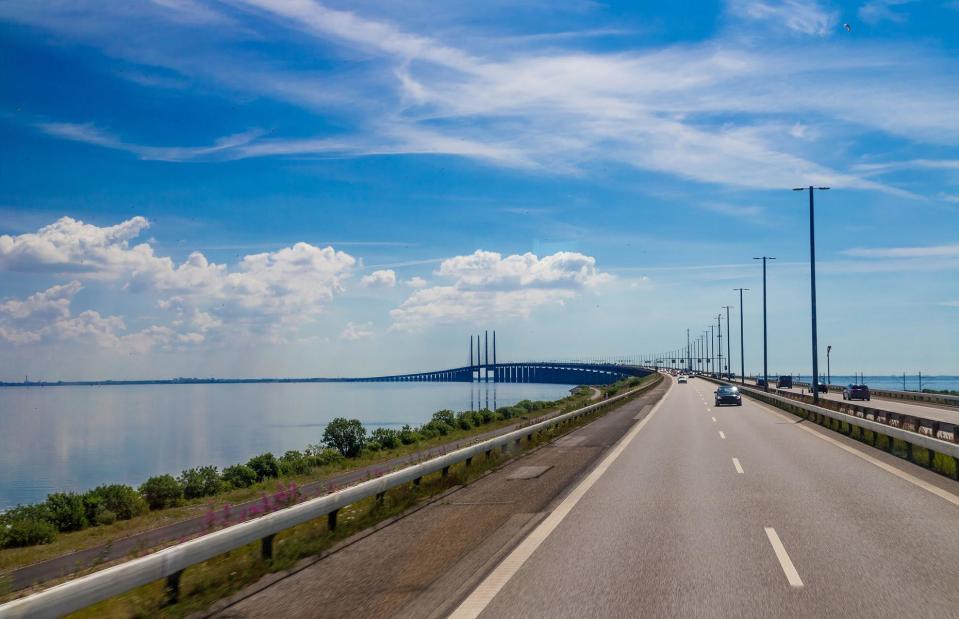

In 2019 a total of 199 people died on its road network, equating to 34 deaths per million. However, there was an increase in fatalities from the previous year when Denmark had 171 total deaths or 30 deaths per million. In a local newspaper report, the Minister of Transport said that speed and inattentive drivers were contributing factors to the fatalities.
29.
Luxembourg (36 deaths per million)


This was down from 2018's figures, when the tiny landlocked country of 600,000 people recorded a total of 36 road fatalities, or 60 per million residents. The majority of accidents took place on rural routes, with its urban roads boasting a good safety record. This is likely due to a speed-limit decrease in built-up areas from 60 kilometres per hour (37mph) to 50 kilometre per hour (31mph) and the development of 30-kilometre per hour (18.6mph) zones.
Joint 27.
Germany (37 deaths per million)
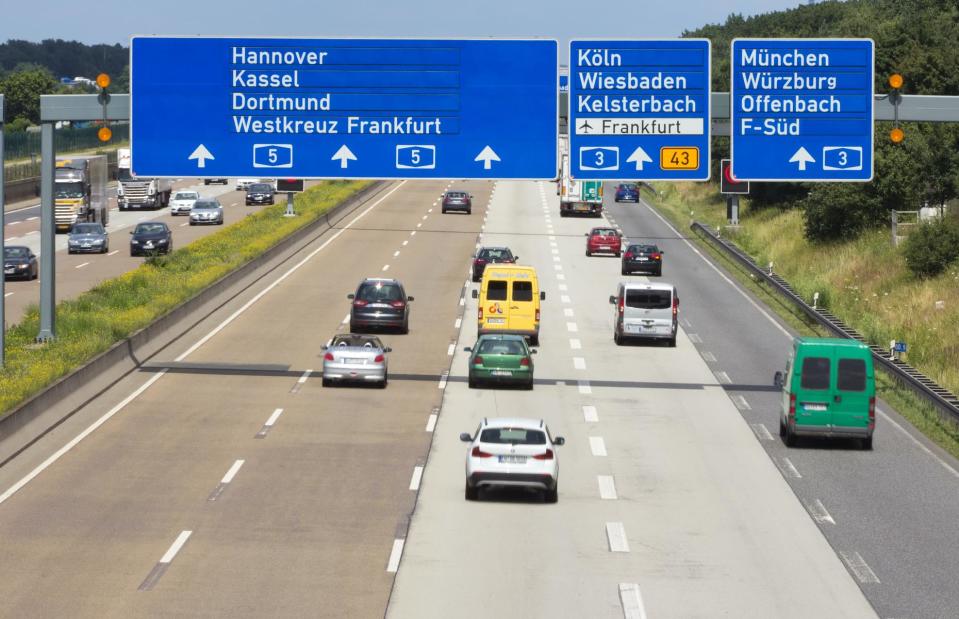

One in seven fatalities were cyclists according to The Federal Statistical Office (Destatis). Germany, which had a population of 83.5 million in 2019, is renowned for its car engineering and its excellent road infrastructure, especially its Autobahn system, the country's 7,500-mile (12,070km) highway network which has sections where speeds are unrestricted.
Joint 27. Spain (37 deaths per million)


Madrugada Verde/Shutterstock Spain also recorded 37 deaths per million with a reported 1,755 deaths on its roads in 2019. These numbers were a reduction on 2018 numbers when Spain saw 39 deaths per million.
The country has prompted an improvement in its road safety over the last decade with a focus on seatbelt and helmet use for its 46.7 million residents.
Joint 25. Finland (38 deaths per million)


According to the data, Finland had 209 fatalities on its road network in 2019, equating to 38 deaths per one million people. This was a decrease from 43 per million in 2018. The capital of Helsinki recorded no deaths whatsoever in 2019, for the first time since records began in 1960.
This was down from an average of 20-30 a year during the 1990s. The positive news is due to concerted efforts around traffic reduction, changing street design and limiting speed. Similar to Sweden and Norway, Finland has implemented Vision Zero to eliminate serious injuries and fatalities for its population of 5.5 million.
Joint 25.
Netherlands (38 deaths per million)


With a well-maintained and interconnected road network for its 17 million residents and a government that's keen to support innovation around sustainable transport, the Netherlands has become a testing ground for self-driving vehicles.
Joint 23. Israel (39 deaths per million)


Israel has a relatively good road safety record with the number of fatalities in 2019 being 355, or 39 per one million population. The National Road Safety Authority estimates that about 50% of Israeli drivers exceed the speed limit with high speeds accounting for 30% of all road accident deaths, in a population of around 8.5 million.
Joint 23. Estonia (39 deaths per million)


LeManna/Shutterstock Throughout 2019 there were 52 road deaths in Estonia, which equates to 39 per million of the population - half the number witnessed in 2009. The Baltic nation of 1.3 million people has made huge strides towards improving road safety in the past 10 years by investing in infrastructure, and this was recognised by the European Transport Safety Council, who awarded it the 2020 Road Safety Pin Award.
Although some rural routes are unpaved, the general condition of roads is good. The country has zero tolerance of drink driving and, by law, headlights must be on at all times. From 1 December to 1 March every year, cars must have winter tyres fitted too.
22.
Slovakia (44 deaths per million)


This is an increase on 2018 when there were 42 deaths per million. With mountainous north and central regions and lowlands in the south, motorists can expect a range of roads including almost 435 miles (700km) of highways and express roads, as well as scenic but challenging single carriage mountain passes. The population of 5.4 million (and any visitors) are subject to zero tolerance of driving under the influence of drink or drugs and the use of mobile phones at the wheel is prohibited.
Joint 20.
Australia (47 deaths per million)


In 2019 there were 1,195 deaths on its roads, or 47 per million of the population - an increase on 2018's 45 deaths per million. Just over 74% of fatalities are men according to Australia's most recent figures too. Driving long distances is common in Australia where the 25.5 million residents are spread across vast distances and driver tiredness a severe hazard.
Australia's remote, regional roads can throw up other treacherous conditions such as extreme weather, wildlife and massive road trains, which can cause a wind rush when passing.
Joint 20. Austria (47 deaths per million)
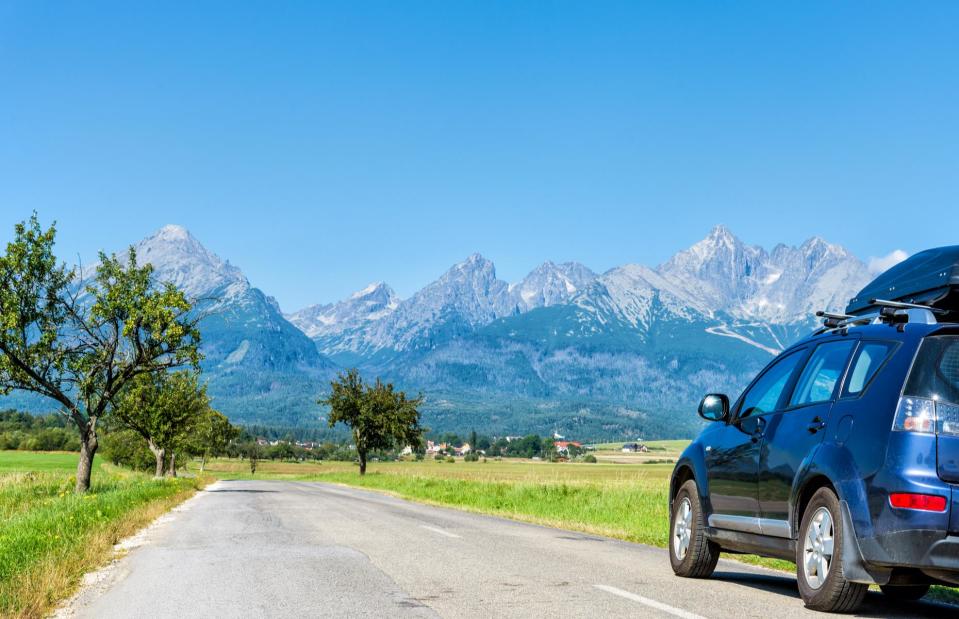

At equal 20th worst was Austria which recorded a total of 416 road deaths in 2019 or 47 per million of the population, up from 46 in 2018. However, the country has seen the number of fatalities fall by 39% since 2010, faster than the EU average of 36%. The ASFINAG Road Safety Programme aims to make Austria's motorways and expressways the safest in Europe for the country's 8.9 million residents.
According to the Austrian Ministry for Transport, Innovation and Technology, an above average number of fatal accidents on motorways are related to driver fatigue at 16% compared to 7% on other roads.
19. France (48 deaths per million)


Away from its traffic-heavy cities, France offers varied landscapes and well-maintained motorways that make it a popular choice for a driving holiday. In 2019, the country recorded 3,239 deaths due to road accidents or 48 per million citizens, which according to the European Commission was the country's lowest on record. Over the past decade, the number of road deaths has fallen by 19%.
18.
Slovenia (49 deaths per million)


Routes cover lowlands and coastlines, though most of its terrain consists of karstic plateaus and ridges plus the precipitous peaks of the Julian Alps. The country recorded 102 fatalities on its roads in 2019, which equates to 49 deaths per million of the population. Dipped low-beam headlights are mandatory at all times and vehicles must have snow chains in their boot from 15 November to 15 March.
17.
Italy (52 deaths per million)


Although this is a tragically high statistic, according to the European Commission, the number of fatalities dropped by 1% in 2019, and has become 20% lower over the last decade. Perhaps unfairly, Italians have a reputation for being fast and hot-headed drivers, but the country's roads can often be narrow, congested and in a poor condition in some areas.
16. Belgium (56 deaths per million)


Illya Kryzhanivskyy/Shutterstock Thanks to its location in the centre of Europe and a dense road network, Belgium has a high traffic volume and is crossed by thousands of freight trucks daily - not to mention road users from the country's 11.5 million residents. Although there has been a steady decrease in fatalities in the last decade, the figure is still higher than the EU average with 646 deaths on roads in 2019, equating to 56 per million of the population.
15.
Czech Republic (58 deaths per million)


That hasn't stopped fatalities - with 58 deaths on its roads per million of the population, the country is above the EU average of 51 per million. According to the Czech Republic's Centre for Transport Research, speeding is the main cause.
14. Cyprus (59 deaths per million)


Olesya Kuznetsova/Shutterstock This Mediterranean island of 1.2 million people recorded 52 deaths on its roads in 2019, ranking it among Europe's worst. However, this was a decrease on 2018's road accidents that equated to 62 deaths per million of the population.
Unusually for Europe, Cypriots drive on the left and there is a speed limit of 100 kilometres per hour (62mph) on its main highways, along with a minimum speed limit of 65 kilometres per hour (40.3mph). This is much lower on rural roads, particularly along the narrow routes that wind around its mountains.
13: Portugal (60 deaths per million)


Another European country with a higher-than-average road fatality rate is Portugal. Despite its relatively modest population of 10.2 million people, it saw a total of 621 deaths on its roads or 60 per million population in 2019. But the country has made huge progress in reducing road deaths in just 12 months - it recorded 66 per million in 2018.
According to the European Commission, Portugal has improved its road safety significantly over the longer term with the number of fatalities decreasing by 43% since 2010, a faster pace than the EU average of 36%.
12. Hungary (62 deaths per million)


With 603 deaths on its roads in 2019 or 62 per million of the population, Hungary's road network is the ninth most dangerous in Europe. However, the most recent statistics represent a 51% drop in deaths compared to a peak in 2006, where 1,303 people were killed in traffic accidents. With a central location in Europe, at the crossroads of four main European transport corridors, Hungary's roads are busy.
It has one of the highest motorway densities in all of Europe and the third-highest road density, after Belgium and the Netherlands, plus a population of 9.6 million.
Joint 10. Republic of Korea (65 deaths per million)


The 10th worst country for road fatalities in 2019, joint with Greece, was the Republic of Korea, says the UK's Department for Transport data. This country of 51.2 million people saw 3,349 deaths in 2019. According to a report by the International Transport Forum, a strategic approach to speed management, including a review of road functions and speed limits is needed to reduce fatalities, as current urban limits are too high and compliance is poor.
Joint 10.
Greece (65 deaths per million)


This was a 0.9% decline from 2018, when 700 were recorded. With the number of road deaths reducing by 54% since 2010, Greece oversaw the largest fall in the EU. Analysis shows that more people were killed on the country's urban road networks than on rural routes and the Greek government announced a national action plan for road safety in 2020.
Improvements will be made to 7,000 dangerous locations helping Greece's 10.4 million residents work towards lowering the death rate further still.
9. Lithuania (66 deaths per million)
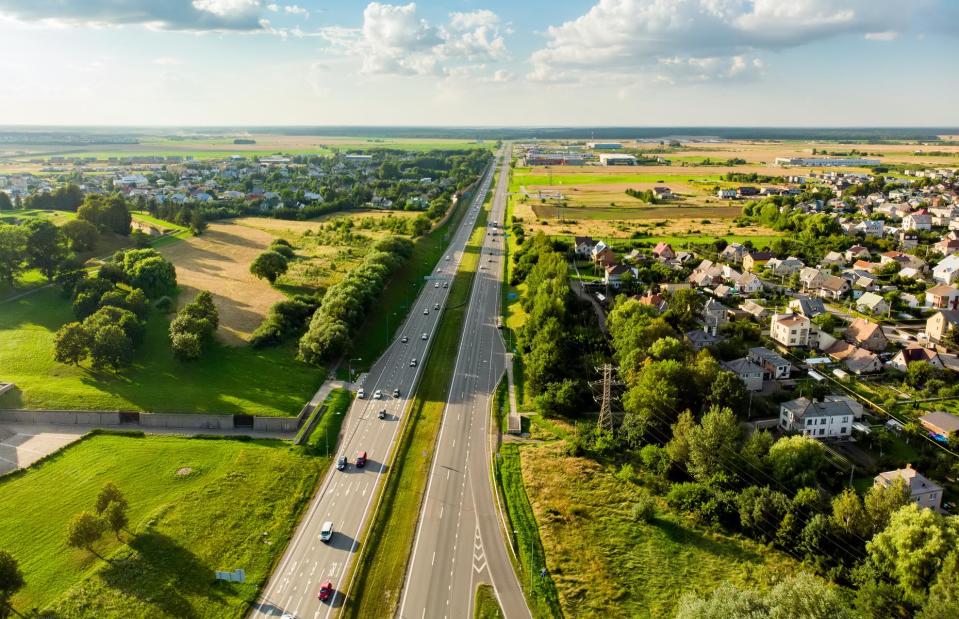

The small Baltic country of 2.7 million people recorded 184 road deaths in 2019 - that's 11 more than 2018 when the country reported its lowest figure. But, looking at Lithuania's long-term trend, it has seen a dramatic improvement recently with the number of deaths on roads decreasing by 41% since 2010. According to a report by the International Transport Forum Lithuania has reduced the number of 18 to 24-year olds being killed on the roads by 62% since 2010 too.
8.
Latvia (69 deaths per million)


While that was down compared to 77 per million in 2018, Latvia remains in the top 10 worst countries worldwide according to the UK's Department of Transport data. Improvements have included reducing speed in dangerous locations, but poor road-surfacing conditions, especially in rural areas, are a major contributor to car crashes in Latvia. The country also experiences extremely cold and potentially hazardous weather in the winter, when winter tyres are mandatory (1 December until 1 March).
7.
New Zealand (72 deaths per million)


It reported 353 deaths on its roads in 2019 or 72 per million population, which was a substantial drop from 77 in 2018. Analysis shows that New Zealand's rural roads are the deadliest with 73% of deaths in 2019, while speed was a factor in 73 of the fatal crashes. In December 2019, the government released Road to Zero, a national road safety strategy for 2020-30, which sets a target of a 40% reduction in death and serious injuries.
6.
Croatia (73 deaths per million)


While those figures are well above the EU average they represent the country's lowest-ever road fatality rate. The number of road traffic deaths in Croatia between 2010 and 2020 has dropped by 44%, putting it among the countries in the EU with the largest improvement in road safety. Roads are often narrow yet picturesque, such as the Adriatic road (or D8) that skirts the country's striking coastline connecting Rijeka[1] in the north with Dubrovnik[2] to the south.
5.
Poland (76 deaths per million)


A mid-sized European country of 37.8 million people, Poland makes regular upgrades to its road networks, however, some of the main routes between major towns and cities can be narrow and poorly surfaced, which makes driving after dark particularly challenging. According to the European Commission, Poland has seen a 37% decrease in deaths from 2010 to 2020 though.
4. Serbia (77 deaths per million)


DMZ001/Shutterstock Another eastern European country with a high road fatality rate is Serbia, which had 534 deaths on its roads in 2019 from a population of around 8.7 million. This is the equivalent of 77 road deaths per million population, a slight improvement on 78 in 2018.
The quality of roads in Serbia varies widely with rural areas often dangerous, especially after bad weather. The UK's Foreign, Commonwealth & Development Office (FCDO) highlights the Ibarska Magistrala, pictured here, which links Belgrade via Cacak and Uzice to Montenegro. It's a particularly dangerous road due to poor conditions and heavy traffic.
3rd most dangerous: Bulgaria (90 deaths per million)


Lukas Bischoff Photograph/Shutterstock With 628 people dying on its roads and a population of just seven million, Bulgaria is ranked the third-worst country in the world and the European Union member with the second-highest road fatality rate. The most recent figures saw a decrease from 2018 when Bulgaria recorded 87 deaths per million population.
Key contributors to the tragedies were speeding, dangerous overtaking, drink-driving and failure to maintain a safe following distance.
2nd most dangerous: Romania (96 deaths per million)


This makes it officially the deadliest place to drive in Europe. An inconsistent investment in road infrastructure means conditions can be variable across the country with high traffic in urban areas and secondary roads often in a bad state of repair. Speeding is the main cause of accidents in a country with just 19.3 million residents.
Most dangerous: USA (110 deaths per million)


ESB Professional/Shutterstock The USA saw the highest number of fatalities from road accidents in 2019, at 36,120 deaths. That's around 110 deaths for every one million of its citizens.
According to state-by-state analysis in 2019, South Carolina had the highest death rate per 100 million miles (160 million km) travelled at 1.73, compared with Massachusetts, the lowest, at just 0.51.
It also found 45% of motor vehicle crash deaths in 2019 occurred in rural areas.
Now check out the world's most amazing roads as you've never seen them before[3]